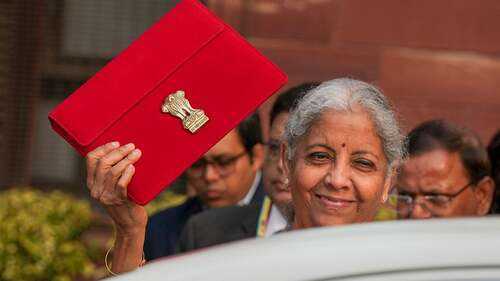
To invigorate Indian economy, which is anticipated to decelerate to a four-year low at 6.4%, the coalition government led by Narendra Modi at the Centre has proclaimed tax alleviations for the middle class and unveiled measures to facilitate business operations in full-year budget presented on Saturday.
Since Modi’s re-election in the preceding year, Finance Minister Nirmala Sitharaman has been confronted with the formidable task of addressing myriad challenges, including deceleration of economic growth, depreciation of Rupee against the US dollar and diminished consumer demand.
The economic growth rate is projected to descend to a four-year low of 6.4% in financial year 2025, the most languid pace since the advent of COVID-19 pandemic in 2019. In presenting her eighth consecutive budget, Sitharaman has navigated numerous arduous phases, including the unprecedented pandemic.
Presently, she contends with economic deceleration, moderate consumption, stagnant private investment and an uncertain geopolitical milieu. To ameliorate business operations, Sitharaman announced the inception of an investment friendliness index for states, through a high-level committee for regulatory reforms.
This committee will scrutinise nation’s diverse rules, certifications, licences and permissions governing business. ‘A light touch regulatory framework predicted on principles and trust shall unleash productivity and employment,’ she proclaimed. Several Indian business magnates have apprised the Indian government that onerous paperwork and compliance burdens impede business operations.
They have advocated for reforms in labour and land market regulations to stimulate investment and engender employment. In an endeavour to rejuvenate the world's fifth-largest economy, Sitharaman introduced incentives for middle-income Indians and small to mid-sized enterprises.
These measures also sought to fuel demand among urban consumers, a pivotal support base for Prime Minister Modi and his administration. On Saturday, the Union finance minister announced an elevation in personal income tax threshold below which taxpayers owe no tax to Rs 12 lakh (13,842 US dollars), up from Rs 700,000.
She also declared an enhancement in brackets for the rates levied on taxable income. Ensuring that her government would introduce a new Income Tax Bill in the ensuing week, she asserted that the new rates would ‘substantially reduce taxes of the middle class and leave more money in their hands, thereby augmenting household consumption, savings and investment.’
India has exhibited a remarkable recovery post-COVID-19, sustaining its status as the fastest-growing major economy globally. However, the GDP growth rate for the second fiscal quarter concluding in September was 5.4%, marking the most sluggish pace in nearly two years. Despite substantial government investment in infrastructure, private sector investment has languished and job creation remains lacklustre. Inflation has hovered near the upper limit of the Reserve Bank of India's target range of 4-6%, constraining its capacity to reduce lending rates.
The government underscored challenges faced by the youth and the economy, including reliance on China for supply chains serving critical industries such as solar power, advanced batteries and electric vehicles in its Economic Survey presented a day before the Budget. The survey report, authored by chief economic adviser V.
Anantha Nageswaran, exhorted India’s Central and state governments to ‘extricate themselves from the path’ and deregulate the economy or confront a ‘high risk of economic growth stagnation, if not economic stagnation.’ The Survey castigated large enterprises for their insufficient efforts to elevate wages.
Nageswaran had remarked in his preface to the preceding year’s Survey that the Indian corporate sector — ‘awash in excess profits’ — ought to earnestly assume its responsibility to generate employment. The report prognosticated real GDP growth of 6.4% for the current fiscal year, a decline from 8.2% in 2023-24.
The government is forecasting growth of 6.3% to 6.8% in the forthcoming 2025-26 fiscal year. The Survey has forecast real GDP growth between 6.3% and 6.8% in the next fiscal — lower than the 6.5-7% forecast in the preceding year’s Survey.
This is likely the first instance wherein it has been unequivocally stated that the true impediments to progress are the Centre and state governments themselves. Yet Indian commoner cannot be pessimistic and look forward to a relatively low growth rate of around 6%, thanks to country’s strong macro fundamentals and robust and stable financial system.
(Writer is a senior journalist based in Bhopal)